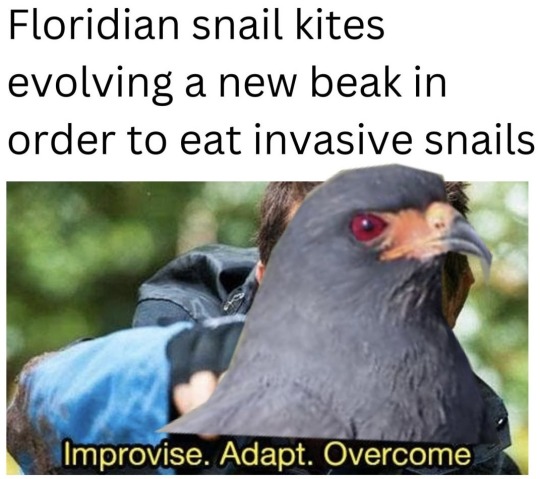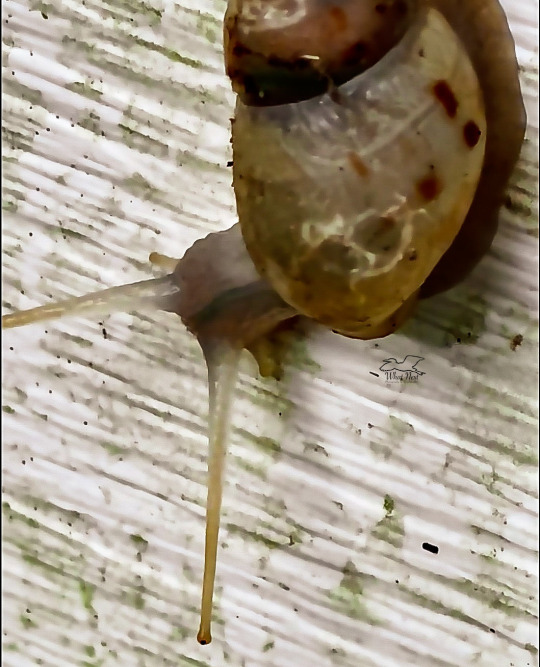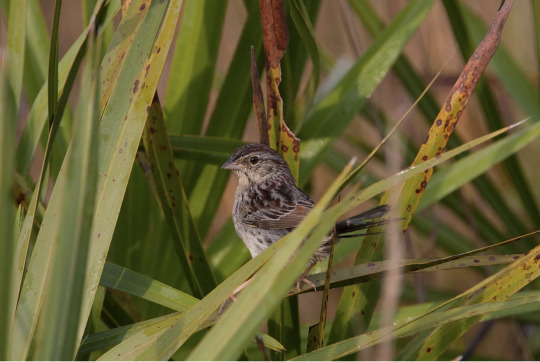#Florida snails
Explore tagged Tumblr posts
Text
Cedar Key Isn’t Just About Beautiful Birds
Helical Not too long ago, I went out to Cedar Key in search of white pelicans. I had no luck in that department, but I did see plenty of other beautiful birds, including several of our other winter visitors. Although Cedar Key is always a great place to see birds, it’s also a great place to see all sorts of other interesting nature, too. In past trips I’ve found flowers, spiders, butterflies,…

View On WordPress
#colorful mollusks#Florida mollusks#Florida snails#marsh mollusks#marsh periwinkle#marsh periwinkle snail#marsh snails#mollusk photographs#mollusk photography#mollusks#photography#saltwater mollusks#saltwater snails#snail photographs#snails
0 notes
Text

snail kite meme #3
3K notes
·
View notes
Text

#IFTTT#Flickr#animal#beautiful#bird#nature#outdoor#water#wild#wildlife#snail#snailkite#kite#florida#flight
47 notes
·
View notes
Text

Snail Kite Rostrhamus sociabilis
5/24/2022 Lake Tohopekaliga, Florida
Unfortunately my best photo of a snail kite. The reason it looks so weird is because it was right upon arrival to this park, and my camera was all fogged up from the humidity on the inside. So I did my best with editing, but it's a very funky looking photo. Regardless, I was so so happy to see this snail kite immediately! It was the reason I visited this location. Snail kites have been one of my favorite birds for years, and I feel very lucky to have seen one in the wild.
#bird#birds#bird photography#birding#birdwatching#snail kite#kite#raptor#raptors#bird of prey#birds of prey#wildlife#nature#florida#florida wildlife#my photos#kestrel speaks
29 notes
·
View notes
Text

Manatee tree snail
#photography#original photographers#nature#photographers on tumblr#florida#cottagecore#forest#tree snail#snailblr
31 notes
·
View notes
Text

Friend🐌
115 notes
·
View notes
Text
#good news#nature#science#environmentalism#environment#animals#snails#sea snail#florida#usa#ocean life#marine life
23 notes
·
View notes
Text


There's a small lake near my house and I found this big shell by the shore.
I have no idea the species. I think it was placed there by a person since I don't think there are any freshwater snails in Florida that are this big or have a shell shaped like this.
2 notes
·
View notes
Text

🐱 … Hey, I think my cats want to go to the post office!! … 🐱
@hrexach
#dr rex equality news information education#graphic source#graphic#graphics#hortyrex ©#horty#lgbt community orlando florida we all are one#quote#it is what it is#facebook#jd vance#cat#cat ladies#cat litter#snail mail
3 notes
·
View notes
Text

The common garter snake is one of the most well known snakes in Minnesota. They live in many different rural and suburban areas and are found on hilltops, along rivers, and in backyards.
2 notes
·
View notes
Text
One thing I've found important but also sometimes difficult to learn is that the difference between a 'butterfly garden' and a 'biodiverse habitat' is that you gotta accept that sometimes things are gonna die.
This isn't to say that you shouldn't try to tend to things. If I find a bunch of oleander aphids harassing some of my young milkweed plants, I'll get the hose and spray them off no problem--hard to tend a garden and save milkweed seeds if they're getting the life sucked out of them before they can even go to seed. If I see a lot of snails starting to devour some of my flowers and turn them into brown mush, I'll pick them off and toss them to the neighborhood ducks.
But with that being said, creating a biodiverse environment for wildlife means there's gonna be prey animals and predator animals, and some insects may fill several niches. I plant milkweed and other flowers so monarchs and other insects can enjoy them as a host plant and a nectar source. Some years, I can barely even find large caterpillars because the wasps just go ham and pig out. That doesn't mean I'm gonna hunt down any and every wasp nest and spray it to death for being oh-so-mean to my precious baby caterpillars! They're just trying to survive, just like everything else in my garden!
And in the grand scheme, everything is part of a cycle that feeds everything else. The caterpillars feed the wasps, which then feed the cardinals and chickadees and mocking birds. Later in the summer, I always see some ladybugs, and my aphid problems drop even without me bringing out the hose. Sure, the snails are a major problem for me, right now. But they might be feeding things I'm not even seeing, late at night--like blindworms, or possums, or frogs, and maybe even the birds are going at them when I'm not outside.
The literal basis of my pollinator garden is so things can eat other things--the caterpillars feed on the milkweed, after all. I can't deny that they're part of an ecosystem, and the effort in trying to just sprays poisons everywhere for no real reason.
If I really wanted to, I could try and collect every single tiny little baby caterpillar and keep them in a little container, so I can rear them by hand, if it hurts too much to think of them getting eaten by wasps. My next door neighbor did that. Brought in 26 caterpillars to protect them from outside enemies, and promptly ran out of milkweed. Out of all that, only maybe 10 tops made it. And the instant she set out her stripped-bare plants again, there were already more monarchs coming in and laying seeds on the stems of plants that just barely were starting to leaf back out.
Nature's a balancing act. Monarchs have been dealing with pests like wasps through all this time. Every time I wonder where the caterpillars are, I sure can still find a few dozen eggs on my plants. Butterflies are still dropping by, still laying tons of eggs on my plants. And it's not like I go out there five times a day to count caterpillars--for all I know, there could still be dozens of those little guys growing up where I don't even see them.
I feel like I'm losing my point. Long story short, if wasps are eating some caterpillars in my backyard, I'm not gonna lose my mind. I want my garden to be part of a wider ecosystem, not a members-only club.
#ani rambles#out of queue#pollinator gardening#'but Ani if you don't mind things dying in your garden why are you killing snails' I spent MONEY on those plants#and they're always my non-milkweed favorites they're going after!!!#coneflowers rudbeckias zucchini squash foxglove I'm not allowed to have nice things because of those fuckers#am I being a bit unfair to them???? maybe#but also you try picking off 100 goddamn snails from your fuckin flowers after a rainy day and see how you feel#'ani make your garden less moist to handle the snail problem' I live in FLORIDA#if I don't water things'll bake OR it'll just rain anyways for three days straight and all of a sudden my rudbeckias are dead#I need to attract some goddamn snail eating frogs but until then im putting them in a bucket and feeding them to#the ducks that live in my neighborhood
47 notes
·
View notes
Text
Interesting Little Manatee Tree Snails Devour Algae
Eager for Algae I realized that I hadn’t posted any video in quite awhile, so I thought why not? Video isn’t my main means of expression, but some things are just better in a video, and this is definitely one of them. Every spring and summer I have quite a few of these little manatee tree snails (Drymaeus dormani) in my yard and around the house. Now don’t freak out, my gardening friends. These…

View On WordPress
#algae eating mollusks#algae eating snails#Florida mollusks#Florida snails#helpful snails#hungry snails#manatee tree snails#mollusk photographs#mollusk video#mollusks#mollusks eating#nature videos#snail photographs#snail video#snails#snails feeding#tree snails#video
0 notes
Text
Visiting Orlando Walt Disney World in 2020
I visited all 4 parks because tickets were cheap.


Magic Kingdom


EPCOT (got a fancy papusa during the food and wine festival)

Disney Springs (although I still call it Downtown Disney sometimes)
#Disney#Disney springs#snail#Epcot#epcot ball#Cinderella’s castle#cinderella#magic kingdom#Walt Disney#Walt Disney world#Florida#Orlando#castle#theme park
6 notes
·
View notes
Text
This isn't, of course, an excuse to go spreading invasive species around in the hopes they'll fix some other ecological problem. But this is certainly a small silver lining in the overall disaster that is invasive species, particularly in an ecosystem that is as damaged and out of balance as the Everglades. South American apple snails can't fix massive wetlands draining, or the fact that invasive Burmese pythons are basically eating all the vertebrate wildlife. And they're already having a deleterious effect on native vegetation.
But for now, maybe they can help the snail kite hang on until habitat can be restored--to include boosting numbers of the native apple snail species.
#raptors#birds of prey#birds#animals#wildlife#vertebrates#native species#invasive species#snails#molluscs#habitat restoration#endangered species#ecology#restoration ecology#Florida#Everglades#wetlands
45 notes
·
View notes
Text


Postcard #15
Received Date: January 2, 2024
Received From: USA, Florida
3 notes
·
View notes
Text
Florida’s Vanishing Sparrows
A group of eccentric endangered birds serves as a bellwether of the climate crisis.
— By Dexter Filkins |July 17, 2023

The survival of the Florida grasshopper sparrow is in doubt, but the scientists who are working to help the species refuse to give up.Photograph from Nature Picture Library/Alamy
The Avon Park Air Force Range, in central Florida, is a noisy place. Most weeks, American pilots practice dropping bombs and firing rockets there, turning old Humvees into clouds of scrap metal and smoke. Last month, a crowd gathered at the range to listen for the song of the Florida grasshopper sparrow—a faint chittering noise that evokes an insect’s buzz, giving the bird its name. As the crowd looked on expectantly, a group of tiny birds, small enough to fit in your palm, ventured tentatively from a pen, looked into the sunshine, and then flew away. The grasshopper sparrow, a modest and eccentric creature that inhabits the prairies of the central and southern parts of the state, is considered the most endangered bird in the continental United States. The birds at the bombing range were part of a program to bring their species back from the brink. “It will be hard, but we think this sparrow is worth saving,” Angela Tringali, a researcher at Archbold Biological Station, which is involved in the effort, told me.
With its subtropical climate, Florida hosts a vast array of wildlife that exists nowhere else in the county. But years of relentless human population growth have driven many to the vanishing point: Florida is home to sixty-seven species of threatened and endangered animals, among the highest numbers in the continental U.S. Those include the Miami blue butterfly, the Everglade snail kite, and the Florida panther, of which fewer than two hundred and fifty remain.
Birds that nest on or near the ground—like the Cape Sable seaside sparrow and the grasshopper sparrow—are especially vulnerable. Grasshopper sparrows can fly, but they spend most of their lives on the ground, nesting in clumps of tall grass. This provides easy access to the insects that they eat (though it also makes them susceptible to predators, like skunks and snakes). As more and more people moved to Florida, their habitat—in the prairies that used to cover much of the state south of Orlando—gave way to shopping centers and housing tracts.
For decades, scientists watched the sparrows’ numbers slowly ebb. In 1986, the U.S. Fish and Wildlife Service declared them endangered; by the end of the century, there were thought to be fewer than a thousand left. Shortly after that, the population began dropping precipitously, and by 2012 as few as seventy-five males remained. Beyond habitat loss, the reasons for the steep decline weren’t entirely clear, though some scientists suspected fire ants, an invasive species. “We started to panic,” Mary Peterson, an endangered species biologist with the U.S. Fish and Wildlife Service, said.
As the sparrows approached extinction, Peterson and other scientists decided that they couldn’t risk letting the bird continue to breed only in the wild. After identifying three concentrations of birds in protected habitats, and one on a private ranch, they gathered what adults they could and began breeding them in captivity around the state. Captive breeding is generally considered a last resort—some species of birds and other animals don’t survive it. But, Peterson said, “the risk of not doing anything could be catastrophic.” The scientists released their first batch of youngsters, a dozen birds, in 2019. Since then, they have bred and released more than seven hundred. In a good year, about a quarter of the chicks survive to adulthood in the wild; the release at the Avon Park bombing range last week brought the estimated number of birds to about two hundred and fifty.
The Avon Park range appears to be an especially promising venue for the birds. With more than a hundred thousand acres, it contains more than a dozen other threatened and endangered species. Twenty years ago, before populations collapsed, it was home to about three hundred grasshopper sparrows. The Department of Defense has proved to be an eager partner in preservation: Charles (Buck) MacLaughlin, the range operations officer, told me that the Air Force and the Fish and Wildlife Service periodically survey the landscape, when there aren’t air strikes scheduled. “I don’t think any have been killed there,” he told me.
Still, the survival of the grasshopper sparrow is in doubt. “Extinction is still a possibility,” Peterson said. The scientists aim to create ten protected sites of at least fifty breeding pairs each—a goal that is many years away, at best. The challenge is less in breeding sufficient numbers than in finding space for them; some ninety per cent of the bird’s historic habitat is gone. There are similar stories throughout the state. The Florida panther is making a modest comeback, but it’s constrained by human presence in the Everglades; last year, some twenty-five panthers were killed by cars. In the oceans off the coast, temperatures of ninety-plus degrees threaten coral reefs. But the scientists who are working to help the grasshopper sparrow refuse to give up. Tringali, the biologist, told me, “It’s really easy to do nothing. We are not done. We have a long way to go.” ♦
#Birds | Endangered Species | Florida | Environmentalism#The New Yorker#Dexter Filkins#The Avon Park Air Force Range#The Continental United States 🇺🇸#Angela Tringali#Archbold Biological Station#Miami Blue Butterfly | The Everglade Snail Kite | The Florida Panther#Orlando#U.S. Fish and Wildlife Service#Mary Peterson#Extinction#Charles (Buck) MacLaughlin#Air Force
3 notes
·
View notes